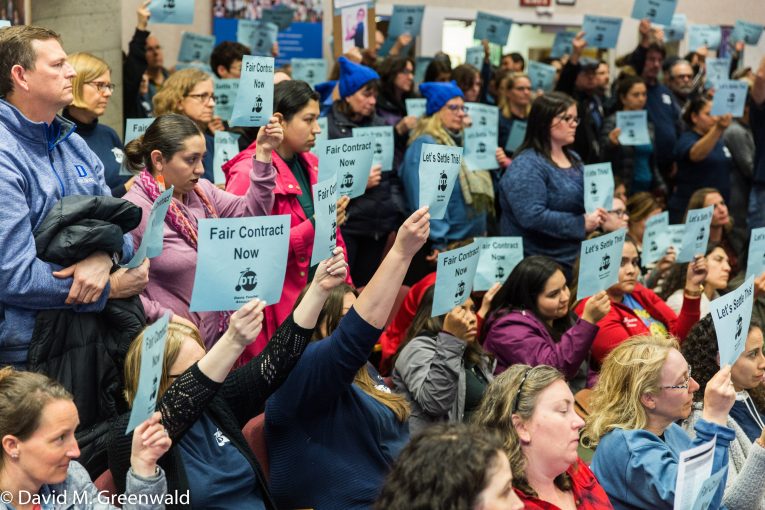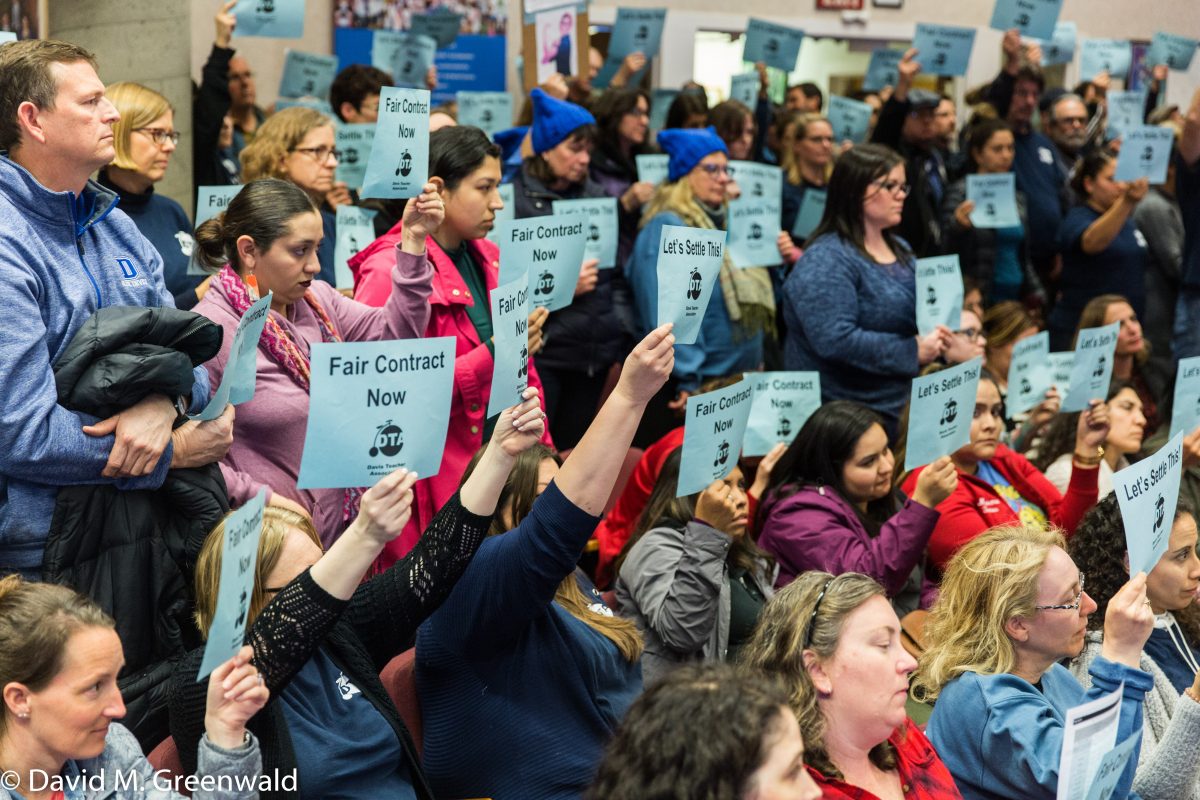

Back in March, the Davis Teachers Association and DJUSD agreed to a contract settlement signed by Deputy Superintendent Matt Best and DTA Lead Negotiator Heather Wade on March 6.
The agreements reportedly will be ratified by the DTA membership on April 5, 2018. In order to finalize the agreement, the board must approve the agreement at the meeting this evening.
The district estimates that the fiscal impact to the DJUSD general fund will be $1,516,550 ongoing starting in the 2017-18 school year and $890,931 one-time in the 2018-19 school year.
The agreement critically contains the following: a 3.5 percent ongoing salary schedule increase for all DTA members, retroactive to July 1, 2017; a 2 percent one-time lump sum payment for 2018-19; up to 20 years of service credit for new employees; up to 10 years of service credit for DJUSD paraeducators hired as teachers in DJUSD; benefits clarification for spouses and domestic partners; an increase of summer school rate to $45 per hour; and an inclusion of extra duty rates into the contract.
The agreement will remain in effect until July 1, 2019.
The Vanguard reported back in March that the agreement will close some of the compensation gap. There will be a 3.5 percent pay increase for 2017-18 school year, with a total of 5.5 percent for the 2018-19 school year. However, without a parcel tax, that number would revert back to 3.5 for 2019-20.
The Vanguard reported last month, according to district data (provided here),”the DTA salary schedule at Step 1 is about $3000 below the regional average for Step 1 and and nearly $4000 below the regional average in Step 5, and about $20 per day (10%) below the regional average daily rate.”
However, the numbers for the most part improve (except, strangely, for Steps 11 to 15) as you go up the pay scale.
The data show, “DJUSD salaries in Steps 6-10 are about $5,000 lower than regional average and about 5.4% or $18 below the regional average daily rate.”
However, when you get to Steps 11 to 15, they are now $5000 to $6000 lower than the regional average or “6.8% or $26 lower than the regional average daily rate.”
That gap closes considerably at Steps 16 to 20, which are now still lagging behind the regional average, but from $2000 to $4000 below. “DJUSD salaries in Steps 16-20 are 1.4% or $7 per day below the average regional daily rate.”
The teachers were pushing for a uniform increase across their salary schedule.
As DTA President Dianna Huculak explained in March, “[W]e have been seeking significant but above all fair increases for ALL of our members, not just small sub groups.
“The huge disparity in the offers made by the district for people – perhaps 7 percent for one member while 1.5 percent for the person working next to them – is unacceptable,” she said.
Ms. Huculak says, “The compensation gap is profound at all levels of the salary schedule. It impacts not just beginning teachers, but also those teachers who have dedicated their professional lives to working in this district.”
There has been some question as to whether the teachers would support a parcel tax.
There is language in the agreement: “DTA and the district agree to bargain any future revenue if a Parcel Tax for Employee Compensation is passed.”
But without additional revenue or cuts, the 5.5 percent increase would be one-time.
DTA was ambiguous on the future support of the parcel tax, with former DTA President Blair Howard stating, “So as you consider this parcel tax, consider that in order for it to get passed, it will need to inspire, it will need to do more than just kind of sort of keep up, and it will really need to meet the needs of the people who are here now because I’m not certain the prospective teacher who is in another community is going to come over to Davis and work on the passage of a parcel tax, so they can come to work in Davis.”
—David M. Greenwald reporting

